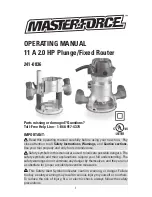
14.
Multiple Spanning Tree Protocol (MSTP)
MN700004 Rev 01
143
network. The MST instances combine with the IST at the boundary of the region to become
the CST. The IST connects all the MSTP switches in the region and appears as a subtree in
the CST that encompasses the entire switched domain, with the root of the subtree being the
IST master. The MST region appears as a virtual switch to adjacent STP switches and MST
regions. Figure 14-2 shows a network with three MST regions and a legacy 802.1D switch
(D). The IST master for region 1 (A) is also the CST root. The IST master for region 2 (B)
and the IST master for region 3 (C) are the roots for their respective subtrees within the CST.
The RSTP runs in all regions.
Figure 14-2 MST Regions, IST Masters, and the CST Root
Figure 14-2 does not show additional MST instan
ces for each region. Note that the topology of MST instances can be different from that of the
IST for the same region.
Only the CST instance sends and receives BPDUs, and MST instances add their spanning-tree
information into the BPDUs to interact with neighboring switches and calculate the final
spanning-tree topology. Because of this, the spanning-tree parameters related to BPDU
transmission (for example,
hello-time
,
forward-delay
,
max-age
, and
max-hops
) are
configured only on the CST instance but affect all MST instances. Parameters related to the
spanning-tree topology (for example,
switch priority
,
port cost
,
port priority
) can be
configured on both the CST instance and the MST instance.
The IST and MST instances do not use the message-age and maximum-age information in the
configuration BPDU to compute the spanning-tree topology. Instead, they use the path cost to
the root and a hop-count mechanism similar to the IP time-to-live (TTL) mechanism.
By using the
mstp max-hops
command, in Protocol Configuration mode, you can configure
the maximum hops inside the region and apply it to the IST and all MST instances in that
region. The hop count achieves the same result as the message-age information (determines
when to trigger a reconfiguration). The root switch of the instance always sends a BPDU (or
M-record) with a cost of 0 and the hop count set to the maximum value. When a switch
receives this BPDU, it decrements the received remaining hop count by one and propagates
this value as the remaining hop count in the BPDUs it generates. When the count reaches
zero, the switch discards the BPDU and ages the information held for the port.
















































